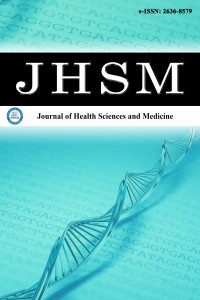1.
Fahmy MM, Hassan MES, Ismaeil AS, Kelany A, Wanis AE. Overview of clinical assessment principles of treatment of lumbar spondylolithesis. Tob Regul Sci. 2023;9(1):2914-2928. doi:10.18001/TRS.9.1.200
2.
García-Ramos C, Valenzuela-González J, Baeza-Álvarez VB, Rosales-Olivarez LM, Alpizar-Aguirre A, Reyes-Sánchez A. Degenerative spondylolisthesis I: general principles. Acta Ortop Mex. 2020;34(5):324-328. doi:10.35366/97997
3.
Daher M, Rezk A, Baroudi M, et al. Lumbar spondylolisthesis grading: current standards and important factors to consider for management. World Neurosurg. 2024;190:311-317. doi:10.1016/j.wneu.2024.07.194
4.
Vanti C, Ferrari S, Guccione AA, Pillastrini P. Lumbar spondylolisthesis: STATE of the art on assessment and conservative treatment. Arch Physiother. 2021;11(1):19. doi:10.1186/s40945-021-00113-2
5.
Hsu HC, Chang CJ, Tung HH, Wang TJ. Disability, emotional distress and well-being among patients with lumbar spondylolisthesis. J Clin Nurs. 2019;28(21-22):3866-3878. doi:10.1111/jocn.14992
6.
Mirzamohammadi E, Ghandhari H, Pirbornatan M, Mohammadi S, Hosseininejad M. Assessment of disability levels in patients with low back pain based on the type of lumbar spinal disorder. J Back Musculoskelet Rehabil. 2021;34(1):131-137. doi:10.3233/BMR-191679
7.
Austevoll IM, Hermansen E, Fagerland MW, et al. Decompression with or without usion in degenerative lumbar spondylolisthesis. N Engl J Med. 2021;385(6):526-538. doi:10.1056/NEJMoa2100990
8.
Mohile NV, Kuczmarski AS, Lee D, Warburton C, Rakoczy K, Butler AJ. Spondylolysis and isthmic spondylolisthesis: a guide to diagnosis and management. J Am Board Fam Med. 2022;35(6):1204-1216. doi:10.3122/jabfm.2022.220130R1
9.
Traistaru MR, Kamal D, Kamal C, Alexandru DO, Neamtu S-D, Bumbea AM. Quality of life in osteoporotic patients with low-grade degenerative spondylolisthesis. Signa Vitae. 2022;18(6):66-75. doi:10. 22514/sv.2022.022
10.
Buyuk AF, Shafa E, Dawson JM, Schwender JD. Complications with minimally invasive transforaminal lumbar interbody fusion for degenerative spondylolisthesis in the obese population. Spine (Phila Pa 1976). 2019;44(23):E1401-E1408. doi:10.1097/BRS.0000000000003160
11.
Bays A, Stieger A, Held U, et al. The influence of comorbidities on the treatment outcome in symptomatic lumbar spinal stenosis: a systematic review and meta-analysis. N Am Spine Soc J. 2021;6:100072. doi:10.1016/j. xnsj.2021.100072
12.
Urakawa H, Jones T, Samuel A, et al. The necessity and risk factors of subsequent fusion after decompression alone for lumbar spinal stenosis with lumbar spondylolisthesis: 5 years follow-up in two different large populations. Spine J. 2020;20(10):1566-1572. doi:10.1016/j.spinee.2020. 04.026
13.
Mazurek M, Kulesza B, Golebiowska N, Tyzo B, Kura K, Szczepanek D. Factors predisposing to the formation of degenerative spondylolisthesis-a narrative review. Medicina (Kaunas). 2023;59(8):1430. doi:10.3390/medicina 59081430
14.
Rivollier M, Marlier B, Kleiber J-C, Eap C, Litre C-F. Surgical treatment of high-grade spondylolisthesis: technique and results. J Orthop. 2020; 22:383-389. doi:10.1016/j.jor.2020.08.015
15.
Chakravarthy V, Patel A, Kemp W, Steinmetz M. Surgical treatment of lumbar spondylolisthesis in the elderly. Neurosurg Clin N Am. 2019; 30(3):341-352. doi:10.1016/j.nec.2019.02.008
16.
Wollowick AL, Sarwahi V. Spondylolisthesis: Diagnosis, Non-Surgical Management, and Surgical Techniques: Springer Nature; 2023.
17.
Karsy M, Chan AK, Mummaneni PV, et al. Outcomes and complications with age in spondylolisthesis: an evaluation of the elderly from the quality outcomes database. Spine (Phila Pa 1976). 2020;45(14):1000-1008. doi:10.1097/BRS.0000000000003441
18.
Inose H, Kato T, Onuma H, et al. Predictive factors affecting surgical outcomes in patients with degenerative lumbar spondylolisthesis. Spine (Phila Pa 1976). 2021;46(9):610-616. doi:10.1097/BRS.0000000000003944
19.
Agarwal N, Aabedi AA, Chan AK, et al. Leveraging machine learning to ascertain the implications of preoperative body mass index on surgical outcomes for 282 patients with preoperative obesity and lumbar spondylolisthesis in the quality outcomes database. J Neurosurg Spine. 2022;38(2):182-191. doi:10.3171/2022.8.SPINE22365
20.
Lubis DU, Harahap EE, Iqbal KM. Correlation of body-mass index, age and gender with the degree of spondylolisthesis on lumbosacral xray photos at Haji Adam Malik Hospital Medan. Med Res Nurs Health Midwife Participat. 2024;5(3):133-144. doi:10.59733/medalion.v5i3.124
21.
Adogwa O, Davison MA, Vuong V, et al. Sex Differences in opioid use in patients with symptomatic lumbar stenosis or spondylolisthesis undergoing lumbar decompression and fusion. Spine (Phila Pa 1976). 2019;44(13):E800-E807. doi:10.1097/BRS.0000000000002965
22.
Laratta J, Carreon LY, Buchholz AL, et al. Effects of preoperative obesity and psychiatric comorbidities on minimum clinically important differences for lumbar fusion in grade 1 degenerative spondylolisthesis: analysis from the prospective quality outcomes database registry. J Neurosurg Spine. 2020;33(5):635-642. doi:10.3171/2020.4.SPINE20296
23.
Bond M, Evaniew N, Bailey CS, et al. Back pain in surgically treated degenerative lumbar spondylolisthesis: what can we tell our patients? Spine J. 2020;20(12):1940-1947. doi:10.1016/j.spinee.2020.08.009
24.
Schneider N, Fisher C, Glennie A, et al. Lumbar degenerative spondylolisthesis: factors associated with the decision to fuse. Spine J. 2021;21(5):821-828. doi:10.1016/j.spinee.2020.11.010
25.
Inculet C, Urquhart JC, Rasoulinejad P, et al. Factors associated with using an interbody fusion device for low-grade lumbar degenerative versus isthmic spondylolisthesis: a retrospective cohort study. J Neurosurg Spine. 2021;35(3):299-307. doi:10.3171/2020.11.SPINE201261
26.
Goh GS, Yue WM, Guo CM, Tan SB, Chen JLT. Does the predominant pain location influence functional outcomes, satisfaction, and return to work after minimally invasive transforaminal lumbar interbody fusion for degenerative spondylolisthesis? Clin Spine Surg. 2022;35(1): E143-E149. doi:10.1097/BSD.0000000000001193
27.
Farmer S, Choi D. Spinal Column and Spinal Cord Disorders. Neurology: A Queen Square Textbook. 2016.
28.
Mummaneni PV, Bydon M, Knightly J, et al. Predictors of nonroutine discharge among patients undergoing surgery for grade I spondylolisthesis: insights from the quality outcomes database. J Neurosurg Spine. 2019;32(4):523-532. doi:10.3171/2019.9.SPINE19644
29.
Rabah NM, Khan HA, Shost M, Beckett J, Mroz TE, Steinmetz MP. Predictors of operative duration and complications in single-level posterior interbody fusions for degenerative spondylolisthesis. World Neurosurg. 2021;151:e317-e323. doi:10.1016/j.wneu.2021.04.034
30.
Fatima N, Zheng H, Massaad E, Hadzipasic M, Shankar GM, Shin JH. Development and validation of machine learning algorithms for predicting adverse events after surgery for lumbar degenerative spondylolisthesis. World Neurosurg. 2020;140:627-641. doi:10.1016/j.wneu.2020.04.135
31.
Ge Z, Liu X, Jing X, et al. Logistic regression model predicts early surgical site infection after spinal fusion: a retrospective cohort study. J Hosp Infect. 2024;149:65-76. doi:10.1016/j.jhin.2024.04.018
32.
Khan JM, Harada GK, Basques BA, et al. Patients with predominantly back pain at the time of lumbar fusion for low-grade spondylolisthesis experience similar clinical improvement to patients with predominantly leg pain: mid-term results. Spine J. 2020;20(2):276-282. doi:10.1016/j.spinee.2019.09.021

